Polyurea Insulation Floor Coating Usage Areas:
Oil and Natural Gas Piping Lines, Airports, Refineries, Fertilizer Factories, Mineral Processing Plants, Food Plants and Factories, Shipyards, Marine Enterprises, Waste Centers, Walkways and Balconies, Water and Dirty Water Treatment Plants, Industrial Production Areas, Power Plants, Structural Steel, Warehouse Floors, Cold Room Facilities, Waste Disposal Areas, Parking Lots, Paper and Pulp Mills Polyurea Insulation and Floor Coating
Polyurea Insulation Floor Coating Application: Surface Preparation:
Generally, coating performance and adhesion are directly proportional to substrate preparation. The surfaces to be applied must be free of dust, oil, rust, corrosion and other contaminants. The biggest cause of problems in surface coating is the lack of a good surface preparation. Surface preparation varies according to the applications. Therefore, the primer to be used on the surface also changes. Primers may vary for both the surface and the product. In order to get a very good efficiency from the application, recommended products and primers should be used.
Polyurea Insulation Floor Coating New and Old Concrete:
The surface must be clean, dry and sound for Polymex-6016 to adhere well to the surface. Dust, dirt, oil, mold release agents, curing agents, salts and easily removable weak parts should be removed from the surface by milling machine, water jet or sandblasting. If the old concrete surface is damaged and uneven, as well as if there are pits, cracks, gaps, it should be repaired by mixing sand into the epoxy-based primer. Polyurea Insulation and Floor Coating
Polyurea Insulation Flooring Wood:
The surface must be dry and clean and all freely removable parts must be removed from the surface. Splinters and excessively rough surfaces should be smoothed, cracks should be repaired with a mixture of sand and suitable primer. Polyurea Insulation Floor Coating
Polyurea Steel (surface exposed to atmospheric and water):
Oil, grease, welding parts and sharp edges must be removed from the surface. The surface should be sandblasted and prepared according to international standards. The surface should be primed on the day of sandblasting to prevent sudden rusting. Polyurea Insulation and Floor Coating
Polyurea Aluminum: Polyurea Insulation Decking
The aluminum surface should be cleaned with aluminum oxide or sandblasting. Excessive sandblasting may cause surface deterioration. After sandblasting, the surface should be cleaned again with a suitable aluminum cleaner. The surface should be dried and then primed.
Polyurea Brass and Copper: Polyurea Insulation Floor Coating
Brass and Copper surfaces should be sandblasted with sand. Apply primer after sandblasting.
Polyurea Galvanized Surface: Polyurea Insulation Floor Coating
Do not sandblast the surface. Oil and dirt on the surface should be removed with a suitable cleaner and primer should be applied.
Polyurea Insulation Flooring Glass Fiber Reinforced Plastic (Polyester):
The gel-coat layer should be lightly sanded or sanded with 80 grit sandpaper.
Polyurea Plastic Foams: Polyurea Insulation Flooring
Polyurethane and Polystyrene foam surfaces can be roughened mechanically for better adhesion.
Polyurea Canvas-Fabric:
Direct application on many fabric and fiber structures, no primer required.
Stainless Steel Polyurea Insulation Floor Coating
Sandblasting is recommended after cleaning stainless steel surfaces from grease, oil and other contaminants. Due to the nature of some stainless alloys, adhesion problems may occur. Preliminary tests are recommended.
Polyurea Insulation Floor Coating Old and New Cast Iron:
Old cast iron may have problems with adhesion as the surface absorbs oil. The surfaces should be sandblasted with a steel ball. Clean the surface from grease and oil.
Polyurea Other Surfaces: Polyurea Insulation Flooring
Pre-tests are recommended before implementation
The temperatures of components A and B should be 25°C before application. oC is recommended. Polymex-6016 is applied with two-component, hose heated, 1:1 ratio, high pressure (Graco Reactor, or other machines) machines. 1 mm thick 1 m2 Approximately 1 kg of Polymex-6016 Polyurea Insulation and Floor Coating should be applied on an area of 1.5 meters.
A and B components minimum 2000 psi and 65 oC. This pressure and temperature should always be kept constant. Polyurea Insulation Floor Coating
Polyurea Color Polyurea Insulation Flooring
Natural state is colorless. It is produced in main colors according to the customer's request.
Due to its aromatic structure, yellowing or darkening may occur when exposed to UV rays. It is recommended to cover Polymex-6016 Polyurea with aliphatic polyurethane or polyurea 6 hours after application.
Polyurea Mixing Polyurea Insulation Floor Coating
Before use, it should be mixed with Polyurea 6016 (Component A) with an air-powered mixer to obtain homogeneous structure and color.
Polyurea Consumption: Polyurea Insulation Floor Coating
It can be applied in desired thickness. Thickness also varies according to application areas. Theoretical consumption 1.1 kg/m2/mm.

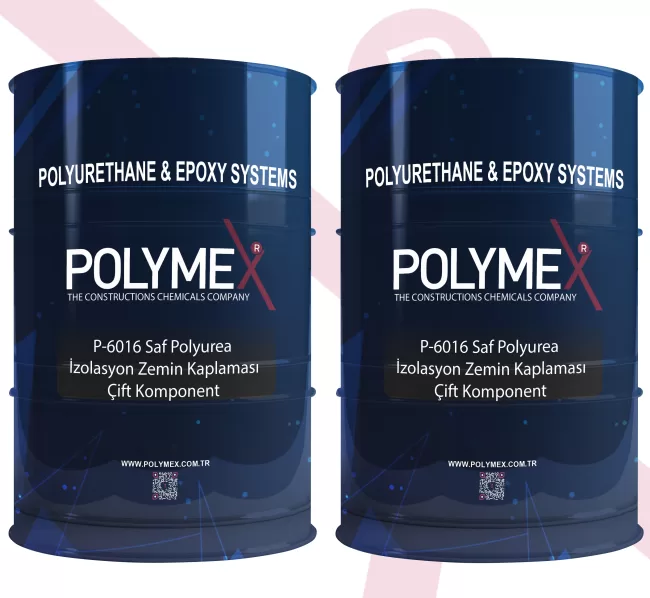









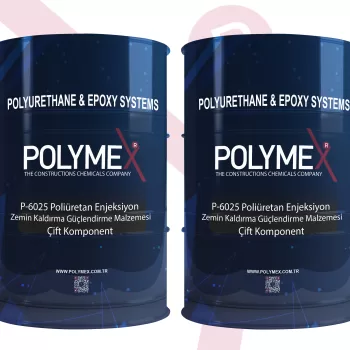
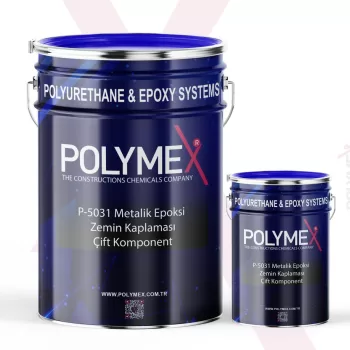
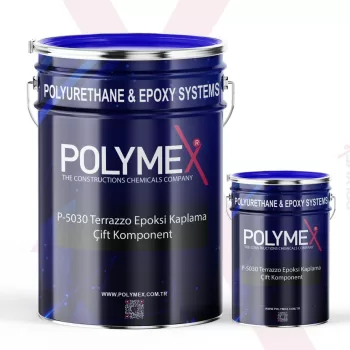
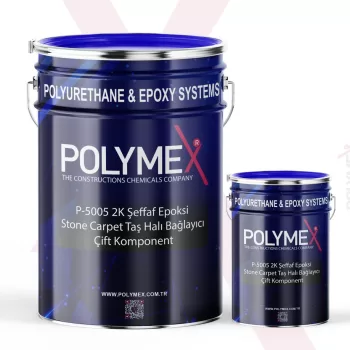

Reviews
There are no reviews yet.